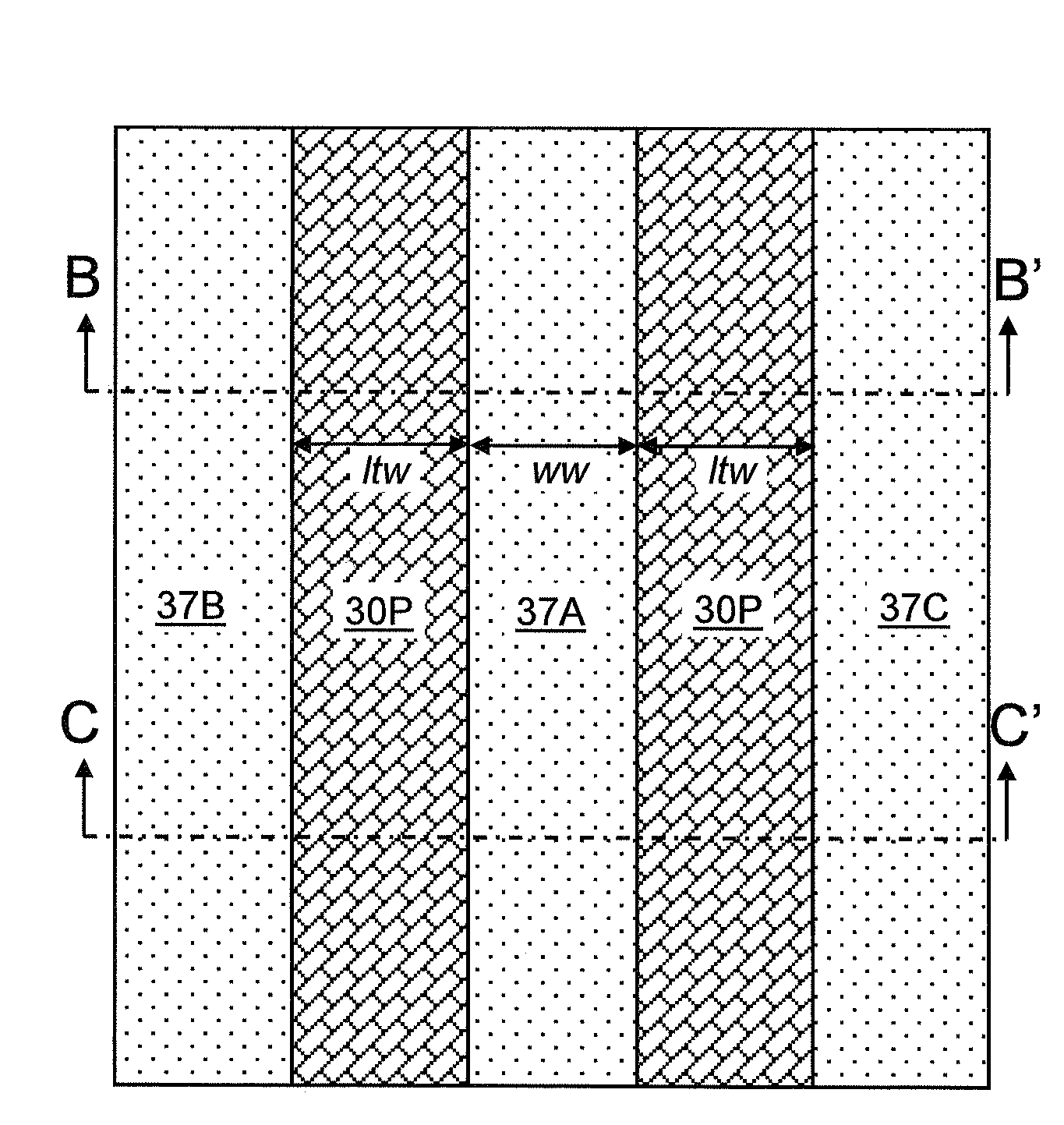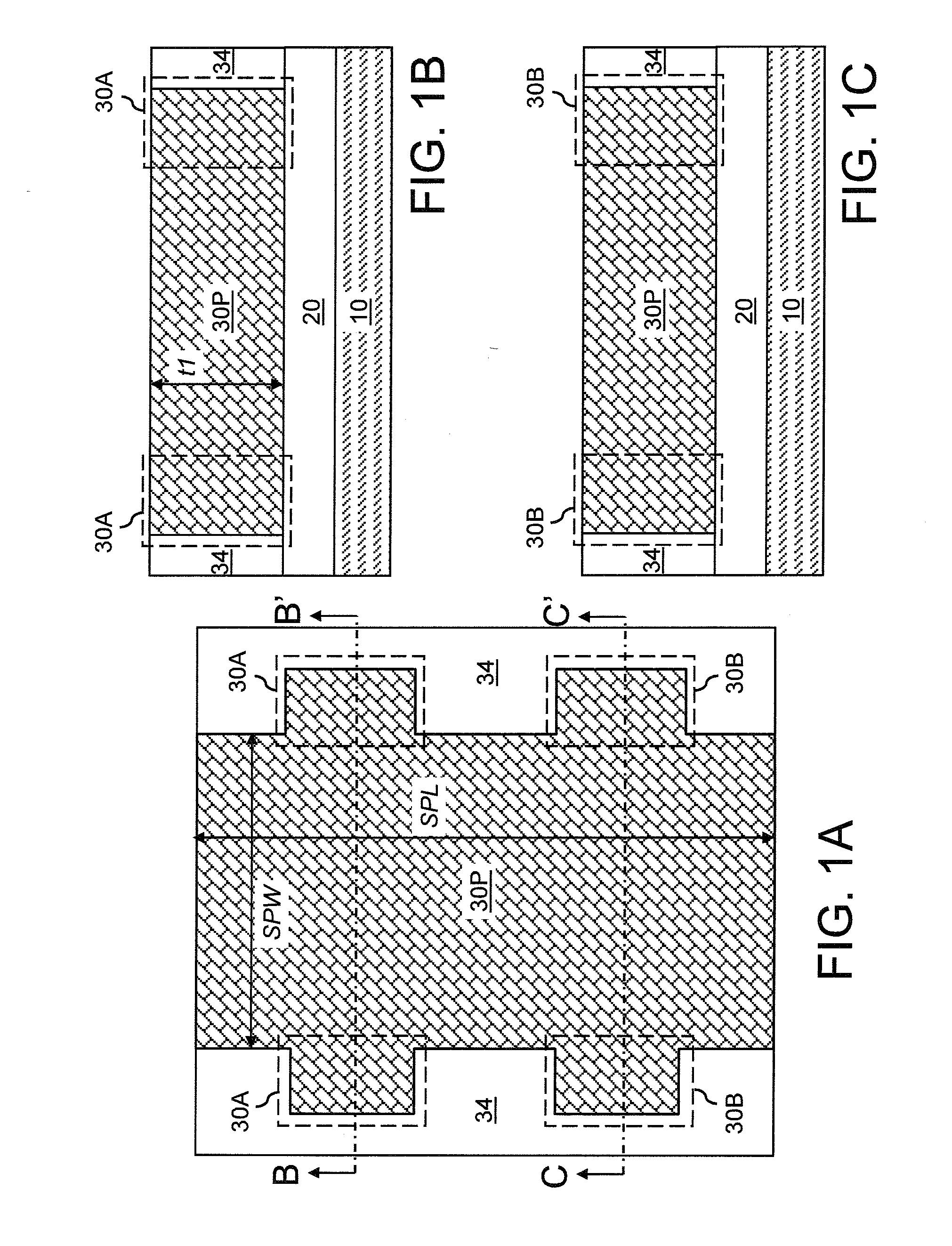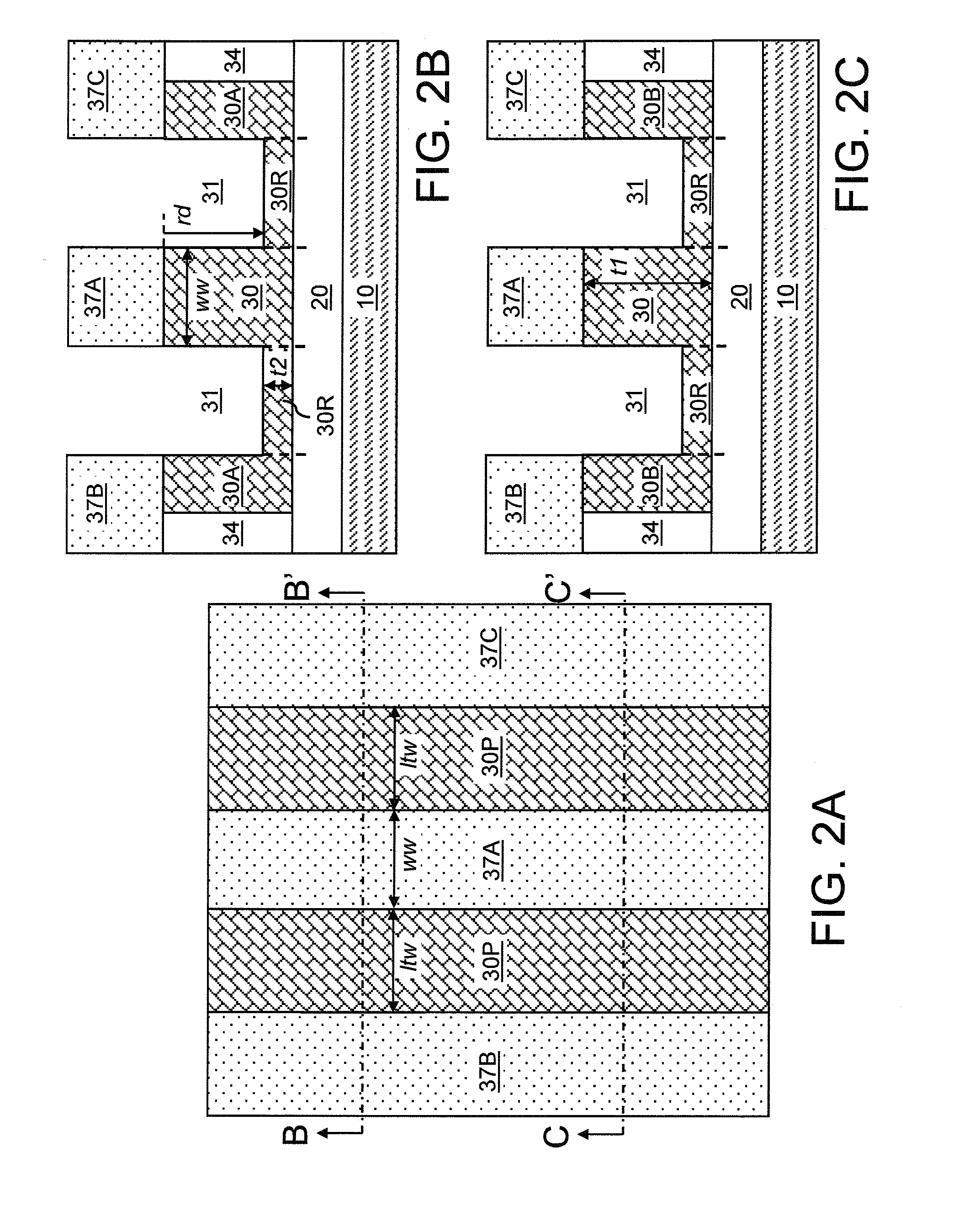Temperature control device for optoelectronic devices
a technology of optoelectronic devices and temperature control devices, which is applied in thermoelectric device manufacturing/treatment, non-linear optics, instruments, etc., can solve the problems of increasing manufacturing costs and processing complexity, affecting the performance of many optoelectronic devices, and increasing the cost of manufacturing and processing, so as to achieve the effect of stabilizing the performance of the optoelectronic devi
- Summary
- Abstract
- Description
- Claims
- Application Information
AI Technical Summary
Benefits of technology
Problems solved by technology
Method used
Image
Examples
third embodiment
[0124]Referring to FIG. 17, a third exemplary semiconductor structure according to the present invention is derived from the second exemplary semiconductor structure by forming a substantially intrinsic lower semiconductor portion 30 and a substantially intrinsic upper semiconductor portion 138 in each temperature control device. A vertically abutting pair of a substantially intrinsic lower semiconductor portion 30 and a substantially intrinsic upper semiconductor portion 138 is herein referred to as a substantially intrinsic semiconductor portion (30, 138). Thus, each of the at least one temperature control device may include the substantially intrinsic semiconductor portion 30.
[0125]The substantially intrinsic semiconductor portion (30, 138) is formed between a p-doped semiconductor portion (131, 132) and an n-doped semiconductor portion (133, 134) of the at least one temperature control device (90, 142, 131, 132, 140, 30, 138, 133, 134, 144, 92). The substantially intrinsic semic...
fifth embodiment
[0129]Referring to FIG. 19, a fifth exemplary semiconductor structure according to the present invention is derived from the second exemplary semiconductor structure by omitting formation of at least one compound semiconductor via 85.
[0130]Referring to FIG. 20, a sixth exemplary semiconductor structure according to a sixth embodiment of the present invention is derived from the second exemplary semiconductor structure at a step corresponding to FIGS. 14A and 5B by removing the photoresist 147 and employing a non-conformal deposition process to form a low-k dielectric material portion 150. The material of the low-k dielectric material portion 150 may be the same as in the second embodiment. The non-conformal property of the deposition process employed to form the low-k dielectric material portion 150 deposits a low-k dielectric material over narrow portions of the of the semiconductor structures above the top surface of the buried insulator layer 20, i.e., between the at least one te...
seventh embodiment
[0132]Referring to FIG. 22, a seventh exemplary semiconductor structure according to the present invention is shown. FIG. 111 is a top-down view of selected elements including p-doped semiconductor portions (131, 132), n-doped semiconductor portions (133, 134), first metal semiconductor alloy regions 140, second metal semiconductor alloy regions 142, third metal semiconductor alloy regions 144, first metal contact vias 90, second metal contact vias 92, and a semiconductor waveguide 136. The location of the optoelectronic device 160 is shown in a broken line. A vertical cross-sectional view along the plane Z-Z′ is the same as FIG. 15A.
[0133]Each of the first metal semiconductor alloy regions 140 is located within a first annulus. Each of the p-doped semiconductor portions (131, 132) and n-doped semiconductor portions (133, 134) is located within a second annulus which encloses and abuts the first annulus. Each of the second metal semiconductor alloy regions 142 and the third metal se...
PUM
 Login to View More
Login to View More Abstract
Description
Claims
Application Information
 Login to View More
Login to View More - R&D
- Intellectual Property
- Life Sciences
- Materials
- Tech Scout
- Unparalleled Data Quality
- Higher Quality Content
- 60% Fewer Hallucinations
Browse by: Latest US Patents, China's latest patents, Technical Efficacy Thesaurus, Application Domain, Technology Topic, Popular Technical Reports.
© 2025 PatSnap. All rights reserved.Legal|Privacy policy|Modern Slavery Act Transparency Statement|Sitemap|About US| Contact US: help@patsnap.com



